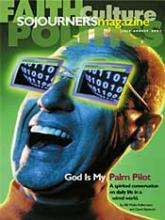"Death could not come out of her mouth." The jury forewoman on a capital murder trial said this of a fellow juror who believed the defendant deserved to die, yet couldn't vote for death. This juror's attitude typifies the conflict, contradiction, and ambivalence that surrounds capital punishment in America, according to Who Owns Death?
The fact that more people question the death penalty's fairness and speak out against it offers a window, Robert Jay Lifton and Greg Mitchell suggest, to explore Americans' current and historic attitudes toward capital punishment. Through the experiences of people asked to kill in our namejudges, jurors, prosecutors, wardens, prison guards, and governorsthe writers hope readers will confront their uneasiness and ambivalence about what Lifton and Mitchell call the "state's ownership of death."
The authors document well the shift in public attitudes over the years. Americans' frustration with crime, combined with their queasiness for the death penalty, has led, they say, to an absurd quest for a more "humane" way to kill. At various points hanging, firing squads, the gas chamber, the electric chair, and now lethal injection have been viewed as advances in killing technology. The more squeamish may want to avoid the writers' descriptions of botched executionspeople catching fire, eyeballs popping out, and blood splattering. In another context, these details would seem lurid, but they are appropriate here.
Florida's experience with the electric chair "Old Sparky" best illustrates for the authors the absurd contradiction of "humane" killing. Pedro Medina was executed by the state in 1997with one glitch: He caught fire. Florida didn't abandon the electric chair until 1999, however, after a national outcry when "Tiny" Davis bled profusely on himself during his execution.
Read the Full Article
